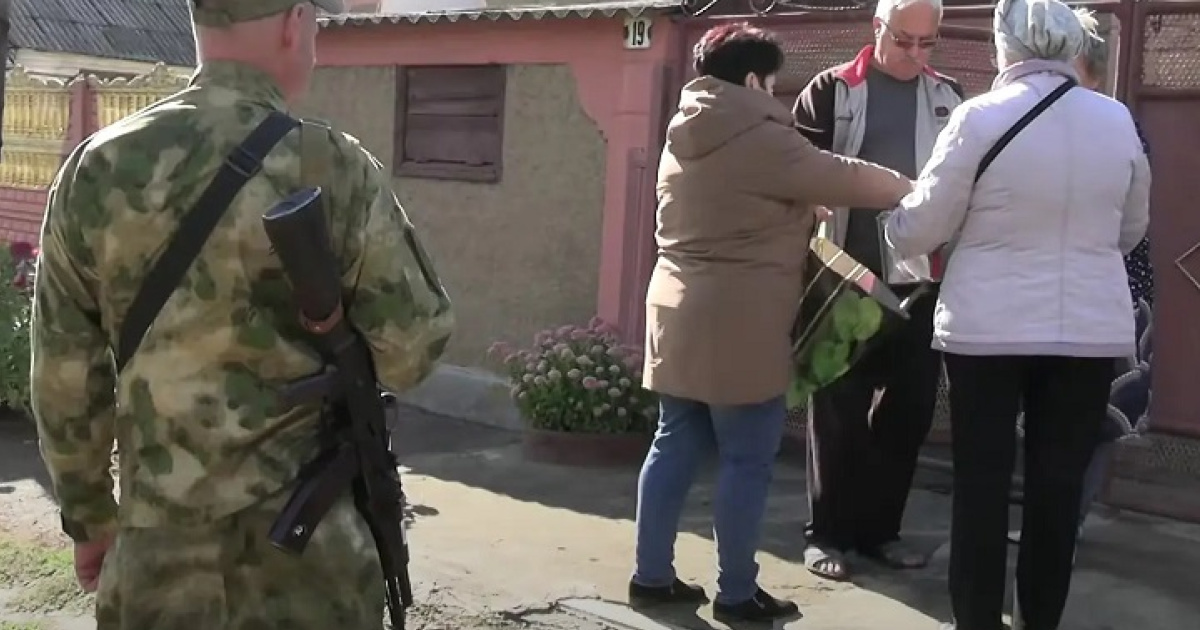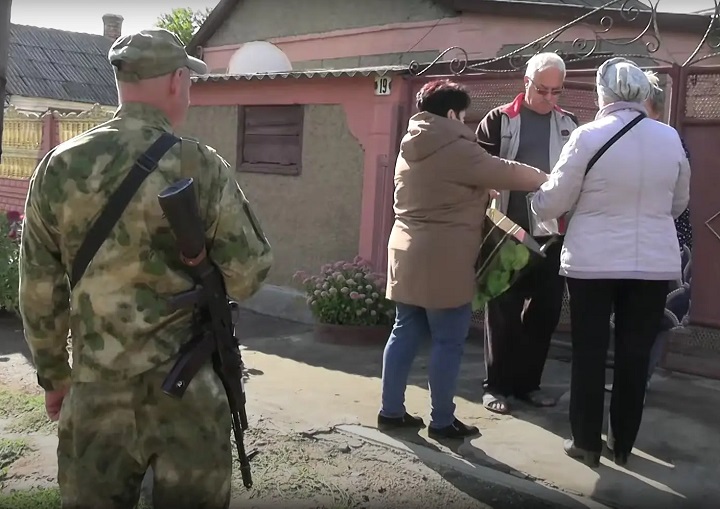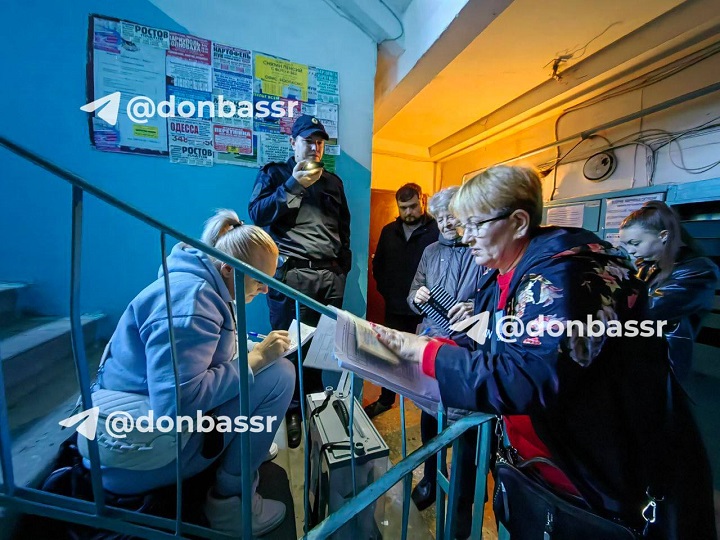
On the last day of September, the occupied Donbas marked the second anniversary of the so-called "reunification" of the "republics" with the russian federation in a highly pompous manner. Numerous rallies, concerts, ceremonial gatherings, and car parades were intended to showcase the "triumph of historical justice". "Donbas is an integral part of Russia", - declared the leader of the "DNR", Denis Pushilin. However, the entire concept of the so-called "return home" of the "DNR" and "LNR" is based on the shaky grounds of propaganda myths and fabricated narratives.
1st myth: Donbas is historically russian land
The annexation of Ukrainian Donbas is ideologically justified by the claim that this region has supposedly always been a part of russia. The idea of appealing to history when talking about the belonging of a territory to various state entities, whose borders constantly shifted, appears odd in the modern world. Since the Great Migration, empires were born and collapsed, and entire ethnic groups were relocated (either forcibly or otherwise).
The situation with the "russian" Donbas is quite ambiguous: for example, Turkey could also lay claim to some parts of it, as the Azov region was part of the Crimean Khanate, a vassal of the Ottoman Empire, until 1774.
The Russian Empire was not called the "prison of nations" for nothing. But after the February Revolution of 1917, this "prison" ceased to exist, and national state-building processes actively began in the regions on the periphery of russia itself.
Ukrainian lands were no exception. On November 7 (20), 1917, the Ukrainian Central Rada declared the creation of an autonomous Ukrainian People's Republic, with Donbas being an integral part of it.
However, few Ukrainian politicians at the time could foresee the future of the new state. Following the Bolshevik coup in Petrograd in October 1917, Soviet power could have been established in Ukraine through entirely legal, democratic means. The question of the form of government was put to the All-Ukrainian Congress of Soviets, held in Kyiv on December 4, 1917. Ukrainian Bolsheviks hoped the congress would proclaim Soviet power, but nearly 2,000 of its delegates supported the Ukrainian Central Rada, headed by Mykhailo Hrushevsky.
Afterward, around a hundred (out of two thousand!) Bolshevik delegates, along with the Left Socialist-Revolutionaries, declared that the Kyiv congress was not legitimate. They relocated to Kharkiv, where they continued the "real" congress, as they called it.
Naturally, the number of "fighters against the junta" was insufficient to make significant decisions, so delegates from the Congress of Soviets of Donbas and the Kryvyi Rih Basin came to their aid. Kharkiv was chosen as the location for the alternative, and certainly not all-Ukrainian, congress for a reason: russia was nearby, and russian troops were even closer—already within the city itself.
In mid-December 1917, this sham congress declared Ukraine a Soviet Republic. Soviet russia quickly recognized the Kharkiv government as the only legitimate authority. In turn, it requested military assistance from the "elder brother", which was promptly provided.
Among the delegates of the fateful Kharkiv congress, one figure stood out: the chairman of the Kharkiv Soviet Executive Committee, Fyodor Sergeyev, known by his party alias, Artem. The deputies elected him as a member of the Central Executive Committee of Ukraine's Soviets. He was one of the first to sow the seeds of separatism in Ukrainian soil. Artem proposed creating a certain "regional" republic, subordinate to russia, within the already proclaimed Soviet Ukraine.
Incidentally, moscow was categorically against this idea. On behalf of the Soviet government of the russian federation and the Central Committee of the russian Communist Party (Bolsheviks), Yakov Sverdlov sent a brief telegram to Kharkiv: "Separation (from Ukraine – OstroV) is considered harmful". However, despite the de facto prohibition, on February 14, the 4th Regional Congress of Soviets of Workers' and Soldiers' Deputies of Donbas and the Kryvyi Rih Basin declared the formation of a separate Donetsk-Kryvyi Rih Republic, with Artem as its head.
However, literally a month later, the kremlin managed to compel the separatist Bolsheviks to incorporate the Donetsk-Kryvyi Rih Republic into the Ukrainian Soviet Republic, with the prospect of soon entirely dismantling the "Donetsk" experiment. On March 15, 1918, the Central Committee of the russian Communist Party (Bolsheviks) resolved: "The Donetsk Basin is considered part of Ukraine".
As is known, the national liberation movement in Ukraine from 1917 to 1921 was crushed by Bolshevik aggression, but even under Soviet rule, albeit formally, the Ukrainian Soviet Socialist Republic remained autonomous, with its own Supreme Council and government. The inclusion of the Donetsk and Luhansk oblasts in it was never questioned. In this form, the Ukrainian SSR faced the collapse of the USSR and declared its real independence.
2nd myth: "Catch the thief!"
Amid the protracted "special military operation", russians, including soldiers of the occupying forces, are beginning to ask questions like: "Why do we need someone else's land?". The kremlin's tales about the eternal belonging of Donbas to the "russian world" are becoming less convincing, prompting russian propaganda to find new justifications for the invasion of Ukraine.
A modernized fake narrative about "historical territories" quickly emerged. It turns out that after the collapse of the USSR, Ukraine... stole part of russia's territories. This claim wasn’t made by some frantic Ukrainophobe on TV but was clearly stated in a new textbook titled "Foundations of Russian Statehood" for russian university students.
This not-so-educational manual was prepared by a group of authors led by the head of the Presidential Directorate for Monitoring and Analysis of Social Processes, Alexander Kharichev. Naturally, the primary source for writing at least the "territorial" section of the textbook was putin's historical fantasies. Here's an excerpt:
"In 1991, following the signing of agreements, the USSR ceased to exist: for the peoples who inhabited the Union, this decision would turn out to be, in Vladimir Putin's words, 'the greatest geopolitical catastrophe of the 20th century'. Administrative borders, which were of little significance within the common economic and legislative system, quickly became state borders; this led to numerous border conflicts and mutual territorial claims... It is important to emphasize that after the stabilization of Russia's economy and political system in the 2000s, Russia was able to reclaim part of its illegitimately seized historical territory: in March 2014... Crimea returned to the Motherland, and on September 30... the Donetsk People's Republic, Luhansk People's Republic, the Zaporizhzhia, and Kherson oblasts followed".
Clearly, these "geographical updates" have nothing to do with reality. The foundational principle of the Belovezha Accords was "the recognition and respect for each other's territorial integrity and the inviolability of existing borders".
This means that independent Ukraine was entirely legitimate and appeared on the map exactly as the Ukrainian SSR did. There were no border conflicts, including in Donbas. In the December 1, 1991, referendum, 83% of the residents of the Donetsk and Luhansk oblasts supported the Act of Independence of Ukraine. Thirteen years later, on January 28, 2003, during a visit by then-russian president vladimir putin to Kyiv, a Treaty on the State Border between the two countries was signed, which confirmed the land border. On April 22 of that same year, russia ratified the agreement.
In other words, no one ever stole any "historical territories" from russia, which, under international law, are an integral part of Ukraine.
3rd myth: Southeast of Ukraine joined russia as a result of a referendum
This lie is blatantly obvious. First and foremost, holding any kind of voting on occupied territories is a complete farce. The European Commission for Democracy through Law (Venice Commission of the Council of Europe) has developed a set of recommended norms for conducting referendums. These norms specifically include ensuring equal conditions for both supporters and opponents of the issue being voted on. In other words, supporters and opponents of "joining the russian federation" should be able to freely express their positions through the media, outdoor advertising, rallies, and demonstrations in public places. As is well known, since 2014 in Donbas, opponents of the "russian world" have been brutally attacked in public squares.
Moreover, the voting should be organized by an impartial body. It is obvious that the occupation administrations of the "DNR" and "LNR" and armed russian guards were not such bodies.

Serious concerns also arise regarding the procedure for ensuring the secrecy of the vote. On social media, local residents reported that in 2022, makeshift "polling stations" were set up at public transport stops, in courtyards, and on playgrounds.
Additionally, members of the fake "election commissions" went door to door, rudely knocking on gates and doors, not requesting but demanding that people "cast their vote". In situations where armed guards accompanied those with ballot boxes, it is impossible to consider such "voting" voluntary.
No one even considered the secrecy of the vote in this situation. "They marked me on the list, handed me a ballot, showed me the box where I was supposed to check, and then all three of them carefully watched to make sure I was fulfilling my 'civic duty' correctly", - people reported.

And finally, the results of the openly illegitimate "referendum" on "joining the russian federation" in no way reflect the will of the people. It is reasonable to assume that such a fateful decision should have been made by all eligible residents of the region. As a reference point for the number of voters in Donbas, one can use the 2012 parliamentary elections.
At that time, around 3.4 million people in the Donetsk oblast and about 1.8 million in the Luhansk oblast were eligible to vote. Over the ten years that followed, neither displaced persons nor residents of territories controlled by Ukraine were stripped of their voting rights. Incidentally, voting in September 2022 was even allowed with Ukrainian documents. Thus, for the "referendum" to be even formally recognized as valid, 50% participation was needed, meaning 1.7 million and 0.9 million voters, respectively. It is evident that, in the war-torn Donbas devastated by the russian aggression, there wouldn't be nearly enough willing participants to reach such numbers. Therefore, the "referendum" results were reported not in absolute numbers, but in percentages, with claims that 99% of participants supported the idea of abandoning their homeland.
4th myth: The "long way home"
Another manipulation of public perception is the notion imposed on the residents of occupied Donbas that the September "referendum" marked the end of a journey back to the "motherland" that began in 2014.
"Two years ago, the Donetsk People's Republic officially returned to its native homeland, once again becoming part of a great country. This event is a true triumph of justice, something we dreamed of for many years", - Pushilin stated in his congratulatory address on the "holiday". However, none of the representatives of the occupation authorities of the "DNR" and "LNR" explained why it took russia eight years to carry out this foreign policy scheme.
Yes, indeed, the main slogan of the anti-Ukrainian "russian Spring" was the region's accession to russia. Rallies and storming of administrative buildings took place under russian flags. However, this message was targeted exclusively at local residents deceived by russian propaganda. They were promised a "Crimean scenario", meaning a swift and bloodless integration into the neighboring state. The pro-russian masses eagerly awaited the promised reunification. The leaders of the uprising assured them that the "referendum" ballots, following the Crimea model, would include two questions: the establishment of an "independent DNR" separate from Ukraine, and the willingness of the "people of Donbas" to join the neighboring state.
Meanwhile, such a development was not part of the kremlin's plans. The "republics" of Donbas were needed by the russian leadership to create a permanent hotspot of tension in eastern Ukraine and to block its path toward the EU and NATO. At the last moment, when the "referendum" process was already underway, the question of Donetsk oblast joining russia was removed. It was promised that the matter would be put to a separate referendum, but this promise was quickly "forgotten".
The then "Prime Minister" of the terrorist "DNR", Alexander Borodai, slyly stated immediately after the fake "referendum" that "the republic plans to ask Russia for inclusion in the Russian Federation in the near future". He also noted that a referendum on joining the russian federation was not necessary, as such a development was provided for by the "DNR constitution".
According to the founder of the terrorist "Vostok" battalion, former commander of the Donetsk "Alpha" unit of the Security Service of Ukraine (SBU), Alexander Khodakovsky, Borodai was specifically dispatched to Donetsk in 2014 to prevent the inclusion of the question about joining russia in the "referendum" ballots.
"We didn’t hold a second referendum—it was not even put on the agenda", - Khodakovsky acknowledges, confirming that Borodai successfully fulfilled the task assigned to him. After the "referendum" on May 11, 2014, the creation of the fake "Donetsk People's Republic" was announced, and the question of its accession to russia, following Crimea's example, was never raised again. Its new revival came in 2022. The so-called "special military operation", initially planned to last three days, had dragged on unacceptably. Putin needed to raise the stakes and show the world that he would not back down. Meanwhile, the russian people needed victories. Thus, the kremlin decided to annex the occupied territories by incorporating the "historical regions" into the russian federation.
By Yurii Bovkh, OstroV





